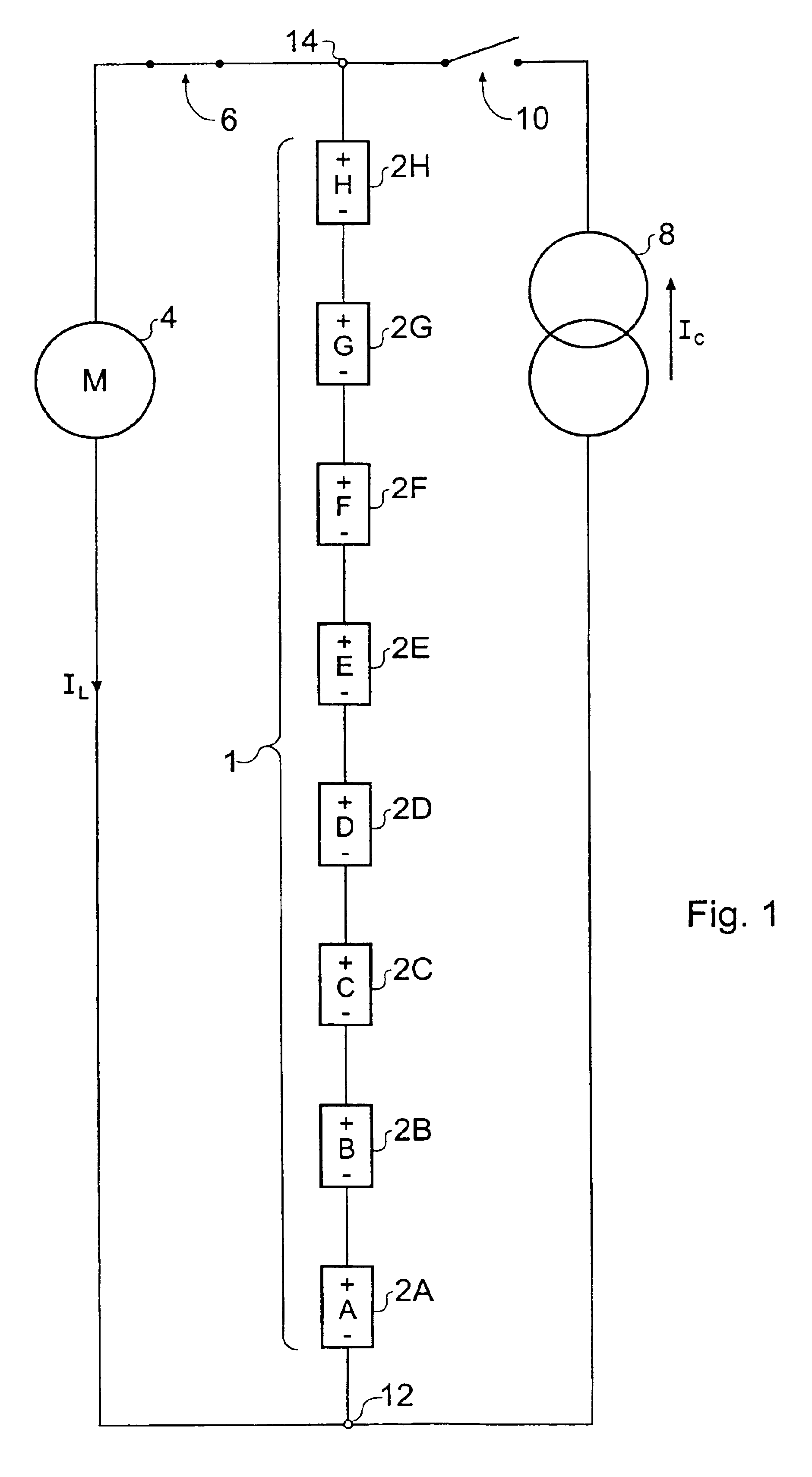Cell equalizing circuit
a cell equalization and circuit technology, applied in the field of electric circuits, can solve the problems of reducing the overall battery performance, reducing the remaining capacity of cells, and further use of batteries, so as to maximize the available capacity of all cells, prevent cell damage, and maximize the effect of battery li
- Summary
- Abstract
- Description
- Claims
- Application Information
AI Technical Summary
Benefits of technology
Problems solved by technology
Method used
Image
Examples
Embodiment Construction
[0035]FIG. 2 is a diagram schematically showing the underlying principle of an equalizing circuit 20 for equalizing cell voltages of eight cells 2A-H according to an embodiment of the invention. The cells 2A-H form a battery 1 with a cathode 12 and an anode 14. These features are similar to and will be understood from the description of the correspondingly numbered features seen in FIG. 1. The equalizing circuit 20 includes eight similar circuit modules 22A-H and a single ferrite core 28.
[0036]The circuit module 22A includes a direct current to alternating current (DC to AC) converter 24A and an inductive winding 26A. The cell 2A is connected to an input of the DC to AC converter and the DC to AC converter is operable to convert a DC cell voltage VDCA of the cell 2A to an AC voltage VACA. The AC voltage VACA has an amplitude dependent on the DC voltage VDCA and a frequency f. The AC voltage VACA is coupled to the inductive winding 26A as indicated in the figure.
[0037]The circuit mod...
PUM
 Login to View More
Login to View More Abstract
Description
Claims
Application Information
 Login to View More
Login to View More - R&D
- Intellectual Property
- Life Sciences
- Materials
- Tech Scout
- Unparalleled Data Quality
- Higher Quality Content
- 60% Fewer Hallucinations
Browse by: Latest US Patents, China's latest patents, Technical Efficacy Thesaurus, Application Domain, Technology Topic, Popular Technical Reports.
© 2025 PatSnap. All rights reserved.Legal|Privacy policy|Modern Slavery Act Transparency Statement|Sitemap|About US| Contact US: help@patsnap.com



